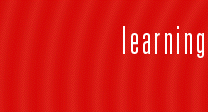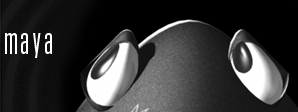|
Modeling | Texturing | Character | Level Building
| Several methods can be used to set-up a character for animation. Character set-up consists of skeletons and IK controls for easy manipulation. Keyframing can be used to create exaggerated character movements.
Maya's Smooth Skin tool is used to attach geometry to a character's skeleton. This method allows vertices to be shared and affected by multiple joints to quickly set-up and deform the character.
Blendshape functionality is also used to create facial animation such as the Jester image above. Blendshape morphs one object into another predetermined shape, and can be used to blend a variety of facial expressions. |
| Character Skeleton |
The skeleton used for this Jester character is fairly basic. Areas such as the hands do not have a full skeletal structure for individual fingers but rather, a limited number of joints that deform the hand as a whole. |
 |
This Jester character is comprised of relatively few vertex points giving the artists an advantage during the skeleton set-up phase. In the torso region, skeletal joints are placed in alignment to specific vertices along the surface. By doing so, very little editing is required after skinning.
In addition, smooth bind functionality can be used to help make the skinning process less edit intensive. Painting skin weights can be used in cases where vertex association and weighting is required. |
Character Setup is covered more in-depth in the Instructor-lead games course. |





